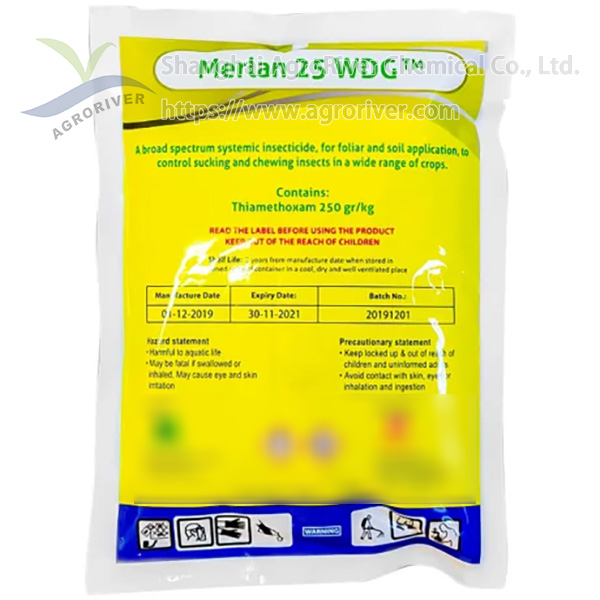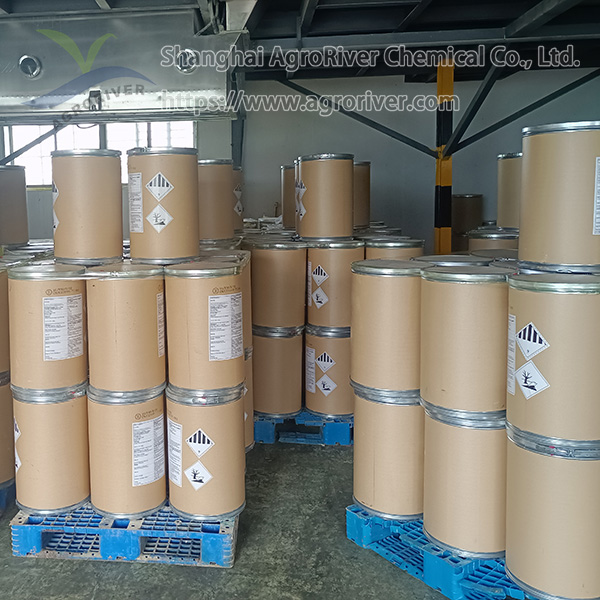Thiamethoxam 25%WDG Neonicotinoid Insecticide
Products Description
Basic Information
Common Name: Thiamethoxam
CAS No.: 153719-23-4
Synonyms: Actara;Adage;Cruiser;cruiser350fs;THIAMETHOXAM;Actara(TM)
Molecular Formula: C8H10ClN5O3S
Agrochemical Type: Insecticide
Mode of Action:It can selectively inhibit the nicotinic acid acetylcholinesterase receptor in the insect central nervous system, thereby blocking the normal conduction of the insect central nervous system, causing the pest to die when paralyzed. Not only has contact killing, stomach poisoning, and systemic activity, but also has higher activity, better safety, wider insecticidal spectrum, fast action speed, and long duration of effect.
Formulation:70% WDG, 25% WDG, 30% SC, 30%FS
Specification:
|
ITEMS |
STANDARDS |
|
Product name |
Thiamethoxam 25%WDG |
|
Appearance |
Stable homogeneous dark brown liquid |
|
Content |
≥25% |
|
pH |
4.0~8.0 |
|
Water insolubles, % |
≤ 3% |
|
Wet sieve test |
≥98% pass 75μm sieve |
|
Wettability |
≤60 s |
Packing
200L drum, 20L drum, 10L drum, 5L drum, 1L bottle or according to client's requirement.


Application
Thiamethoxam is a neonicotinoid insecticide developed by Novartis in 1991. Similar to imidacloprid, thiamethoxam can selectively inhibit the receptor of acetylcholinesterase nicotinate in the central nervous system of insects, thus blocking the normal conduction of the central nervous system of insects and causing the death of insects when paralysed. It not only has palpation, gastric toxicity, and internal absorption activity, but also has higher activity, better safety, wider insecticidal spectrum, fast action speed, long duration and other characteristics, which is a better variety to replace those organophosphorus, carbamate, organochlorine insecticides with high toxicity to mammals, residual and environmental problems.
It has high activity against diptera, lepidoptera, especially homoptera pests, and can effectively control a variety of aphids, leafhopper, planthopper, whitefly, beetle larvae, potato beetle, nematode, ground beetle, leaf miner moth and other pests resistant to various types of chemical pesticides. There is no cross resistance to imidacloprid, acetamidine and tendinidamine. Can be used for stem and leaf treatment, seed treatment, also can be used for soil treatment. Suitable crops are rice, sugar beet, rape, potato, cotton, string bean, fruit tree, peanut, sunflower, soybean, tobacco and citrus. When used at recommended dosage, it is safe and harmless to crops.








